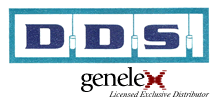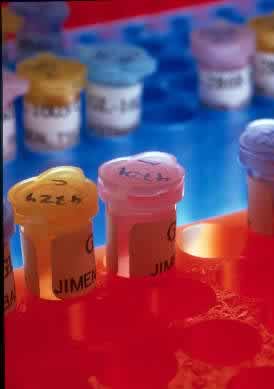Frequently
Asked Questions
Do not alter the dosage amount or schedule of any drug you are
taking without first consulting your doctor or pharmacists.
How has DNA Prescription Drug Reaction Testing been used up
to this point?
Pharmaceutical companies regularly use these tests in clinical trials,
to exclude people from the trials. Medical centers around the country
are also beginning to use these tests on their own patients to avoid
adverse drug reactions (ADRs) and achieve more accurate prescribing.
Why is this testing just now becoming available?
There are many reasons. Key elements of this test have recently
been developed. ADRs don't have an organized constituency like
most diseases do, no American Cancer Society or March of Dimes.
Many doctors do not realize the extent of the problem and the
large pharmaceutical companies and insurers may have a difficult
time becoming motivated to act because of the added initial costs.
Genelex has made this test available to the public so people can
benefit now from the recent advances in pharmacogenetics. We also
wish to recognize that more people want to take greater responsibility
for their own healthcare. We support that decision.
What is pharmacogenetics?
Pharmacogenetics is the study of how individual people respond
to medicines based on their genetic makeup. When you take a drug
or are exposed to an environmental toxin, enzymes in your liver,
intestines and other tissues go to work to breakdown that drug
so that it can be excreted. Your genes provide the instructions
for making these enzymes, several of which may be involved in
the breakdown and excretion of any particular drug. Your specific
genetic makeup determines how these enzymes interact and whether
they work faster or slower than average.
How are drugs processed by the body?
Drugs act on target sites in body tissues to cause a therapeutic
effect. They are removed from the body by being converted into
an inactive form. The P-450 family of drug metabolizing enzymes
inactivates most prescription drugs. The most important and most
thoroughly studied of these enzymes are CYP2D6 and CYP2C9. More
than half of the population has at least one defect in these enzymes
that can greatly increase the risk of an adverse drug reaction.
What are adverse drug reactions?
Adverse drug reactions (ADRs) depend on the type of drug or combination
of drugs being taken. They have many causes and are often not
well understood. Many ADRs occur because individual differences
in drug metabolizing enzymes (DMEs) and other parts of the processing
systems have not been taken into account when the drug was approved
or prescribed. Three-fourths of all ADRs are dose-dependent, with
many occurring at standard manufacturer-recommended doses. A 1998
medical report found adverse drug reactions to be the fourth leading
cause of death in the U.S., at more than 100,000 annually. .
What are the most useful enzymes to test genetically?
• CYP2D6 (cytochrome P450 2D6) is the best studied
of the DMEs (drug metabolizing enzymes) and acts on one quarter
of all prescription drugs. Approximately ten percent of the population
have a slow acting form of this enzyme and five percent a super-fast
acting form. Drugs that CYP2D6 are thought to inactivate include
Prozac, Zoloft, Paxil, Effexor,Hydrocodone, Amitriptyline, Claritin,
Cyclobenzaprine, Haldol, Metoprolol, Rythmol, Tagamet, Tamoxifen,
and the over-the-counter diphenylhydramine drugs, Allegra, Dytuss
and Tusstat.
•CYP2C9 (cytochrome P450 2C9) is the primary route
of metabolism for Coumadin (Warfarin), Amaryl, Isoniazid, Sulfa
and Ibuprofen. Clinical studies suggest that the use of genetic
testing may be especially helpful with warfarin administration.
Other drugs that are thought to be metaboloized by 2C9 include,
Amitriptyline, Dilantin, Hyzaar, THC (tetrahydrocannabinol), Naproxen
and Viagra.
•CYP2C19 (cytochrome P450 2C19) is associated with
the metabolism of Carisoprodol, Diazepam, Dilantin, Premarin and
Prevacid.
•NAT2 (N-acetyltransferase 2) is a second step drug
metabolizing enzyme that acts on Isoniazid, and Procainamide and
Azulfidine. The frequency of the NAT2 "slow acetylator"
in various worldwide populations ranges from 10% to more than
90%.
For additional information on these and other prescription drugs
visit http://www.rxlist.com/top200.htm.
How will my doctor or pharmacist use my personal DNA Prescription
Drug Reaction Profile?
Prescription drugs on the market today have been tested and approved
in a "one size fits all" manner despite the long-established
knowledge that drug inactivation rates vary greatly from person
to person. Now for the first time your health care providers can
learn about your individual drug reaction profile and that can
help them take better care of you.
Check
Common Drugs Processed by Enzymes We Test
Order
DNA Prescription Drug Reaction Profile
|





